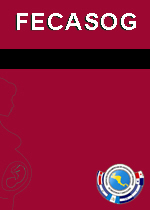Síndrome del miocardio aturdido
Autores/as
DOI:
https://doi.org/10.37980/im.journal.revcog.20211782Palabras clave:
Miocardiopatía por estrés, síndrome de Takotsubo, embarazoResumen
La miocardiopatía por estrés, también conocida como “síndrome de miocardio aturdido” es una disfunción ventricular que simula un infarto agudo del miocardio, pero sin evidencia de coronariopatía obstructiva o ruptura de placa ateromatosa. Generalmente se presenta como consecuencia de situación de estrés, por lo que las complicaciones propias de un embarazo, por ejemplo, un cuadro de shock séptico o una hemorragia post parto, podrían desencadenar esta condición. La presente revisión busca brindar una actualización del tema, así como enfocar el cuadro en la paciente obstétrica en base a la evidencia disponible a la fecha.
Publicado
Número
Sección
Licencia
Derechos de autor 2021 Infomedic Intl.Derechos autoriales y de reproducibilidad. La Revista RevCog es un ente académico, sin fines de lucro, que forma parte de la Sociedad Centroamericana de Ginecología y Obstetricia. Sus publicaciones son de tipo ACCESO GRATUITO y PERMANENTE de su contenido para uso individual y académico, sin restricción. Los derechos autoriales de cada artículo son retenidos por sus autores. Al Publicar en la Revista, el autor otorga Licencia permanente, exclusiva, e irrevocable a la Sociedad para la edición del manuscrito, y otorga a la empresa editorial, Infomedic International Licencia de uso de distribución, indexación y comercial exclusiva, permanente e irrevocable de su contenido y para la generación de productos y servicios derivados del mismo.








